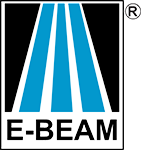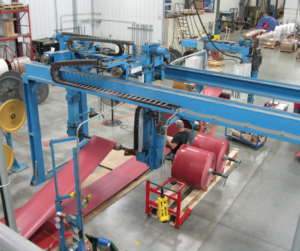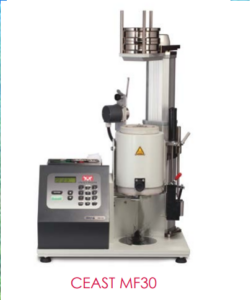Key Takeaways:
- Material exposure is the process of subjecting a material to specific doses and scenarios to assess its compatibility and performance.
- Material compatibility testing is crucial when transitioning from one sterilization modality to another, such as from ETO to radiation-based technology to radiation-based technology.
- Dose and dose rate are important factors in material exposure, with dose referring to the amount of energy delivered to the product and dose rate indicating the amount of energy delivered per unit of time.
- Different dose rates can have varying effects on materials, with faster exposure potentially resulting in fewer reactions and slower exposure allowing for more radical formation and interaction, e.g. oxidation reactions.
- Electron beam radiation is often considered more material-friendly compared to gamma radiation due to its ability to deliver a sterilization dose in far less time due to the much higher dose rate.
- Material compatibility testing should be considered early on in the product development phase to ensure a path to successful sterilization of the product.
Understanding Material Exposure and Compatibility Testing
Material exposure, in simple terms, refers to subjecting a material to a specific dose of radiation in order to assess its compatibility and performance. This process is commonly known as material compatibility testing and is essential when transitioning from one sterilization modality to another. For example, when converting from gas-based sterilization technologies like ethylene oxide (ETO) or hydrogen peroxide gas plasma to radiation-based technologies like gamma or electron beam (e-beam) radiation, material compatibility testing is necessary to ensure that the product will still perform as intended. Per ISO 11137-1, the purpose of the test is to establish the maximum dose for the product by showing the product can “meet its specified functional requirements throughout its defined lifetime”
The goal of material exposure and compatibility testing is to evaluate how a material responds to specific doses and dose rates of radiation. This is particularly important when considering the different characteristics and behaviors of materials when exposed to different radiation models. For instance, polymers undergoing material modification rely on the generation of free radicals within the material upon exposure to radiation. The yield and interaction of these radicals determine the changes induced in the material, which can be either beneficial or detrimental. The dose rate plays a crucial role in this process, with faster exposure potentially resulting in fewer reactions and slower exposure allowing for more radical formation and interaction.
Dose vs. Dose Rate: Understanding the Difference
To better understand the impact of dose and dose rate on material exposure, it is important to differentiate between the two. Dose refers to the amount of energy delivered to the product or the amount of energy absorbed by the product during exposure. On the other hand, dose rate refers to the amount of dose delivered per unit of time.
For example, in the case of electron beam radiation, the standard sterilization dose for medical devices may be 25 kilogray (kGy). In a gamma chamber, this dose may take around two and a half hours or longer to deliver. However, with e-beam processing, the same dose can be delivered in about a minute or slightly longer. This difference in dose rate, or the amount of dose delivered per unit of time, highlights the varying magnitude of exposure between different radiation modalities.
The Impact of Dose Rate on Product Performance
The varying dose rates between different radiation modalities can have significant implications for product performance. When transitioning from one e-beam accelerator to another, it is often advisable to run material compatibility tests to assess the effects of different dose rates on the product.
The speed at which the material is exposed to radiation can influence the reactions and interactions that occur within the material. For example, if the exposure is too fast, there may not be enough time for radical recombination or diffusion processes to take place. On the other hand, if the exposure is too slow, there may be an increased likelihood of radical formation, recombination, and subsequent detrimental effects on the material.
It is important to note that different products may respond differently to varying dose rates. Some products may benefit from faster exposure, while others may require slower exposure to allow for desired reactions without detrimental effects. This is why material compatibility testing is crucial in determining the optimal dose rate for a specific product.
The Importance of Material Compatibility Testing
Material compatibility testing is not always necessary when converting from one radiation sterilization modality to another, especially if the product meets the same criteria. However, it is essential to ensure that the maximum dose for the product is accurately assessed.
Relying solely on the DUR achieved with a specific radiation modality to determine the maximum dose for a product may not provide an accurate representation of the product’s tolerance to radiation, and in some cases it may restrict the possibility of using alternative radiation modalities.
At E-BEAM Services, we offer material compatibility testing to help customers evaluate the compatibility of their products with e-beam radiation. Our approach involves suggesting a few dose levels based on the customer’s requirements and conducting trials to expose samples to the different dose levels. These samples then are tested by the manufacturer for the performance in the product specific properties.
The Future of Material Compatibility Testing
Material compatibility testing is becoming increasingly important in light of the challenges faced by the industry, such as the availability of cobalt or ethylene oxide. As these resources become more scarce, it is crucial for manufacturers to explore alternative sterilization modalities and assess the compatibility of their products with these options. Material compatibility testing offers valuable insights into the performance of products under specific doses and dose rates, allowing manufacturers to make informed decisions about the most suitable sterilization modality.
It is worth noting that the best time to evaluate the right sterilization modality is during the product development phase. By considering material compatibility testing early on, manufacturers can optimize their product design and ensure that it is compatible with the chosen sterilization modality. This proactive approach can save time, resources, and potential setbacks in the future.
Overall, material exposure and compatibility testing play a crucial role in ensuring the performance and compatibility of products with specific sterilization modalities. By understanding the impact of dose and dose rate on material reactions and interactions, manufacturers can make informed decisions about the most suitable sterilization modality for their products. Material compatibility testing not only helps in the transition from one sterilization modality to another but also enables manufacturers to optimize their product design and ensure its compatibility with the chosen sterilization modality.
As the industry faces challenges in cobalt-60 and ETO availability, material compatibility testing becomes even more important in exploring alternative sterilization options. By considering material compatibility testing during the product development phase, manufacturers can streamline the sterilization process and ensure the successful launch of their products.
Contact us to learn more about scheduling a material exposure for your product!




